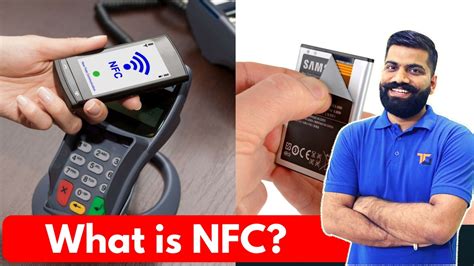What is NFC and How Does it Work?
NFC is a short-range wireless communication technology that enables two devices to exchange data when they are brought within close proximity of each other, typically less than 4 centimeters (1.6 inches). NFC operates on the 13.56 MHz frequency and is based on the principles of Radio Frequency Identification (RFID).
An NFC system consists of two main components:
- NFC reader/writer: This device generates an electromagnetic field that powers and communicates with the NFC tag.
- NFC tag: This is a small chip with an antenna that can store and transmit data when powered by the reader’s electromagnetic field.
The communication between the reader and the tag follows a specific protocol called ISO/IEC 14443, which defines the standards for contactless smart cards.
The Three Modes of NFC Communication
NFC devices can operate in three different modes:
-
Read/Write mode: In this mode, the NFC reader/writer can read data from or write data to an NFC tag. This mode is commonly used for smart posters, where users can tap their NFC-enabled device on the poster to access additional information or perform an action.
-
Peer-to-Peer (P2P) mode: This mode allows two NFC-enabled devices to exchange data directly with each other. P2P mode is used for file transfers, contact information sharing, or even gaming.
-
Card Emulation mode: In this mode, an NFC device acts as a contactless smart card, emulating the functionality of traditional cards such as credit cards, access control cards, or public transportation tickets. This mode is the foundation for mobile payment systems like Apple Pay and Google Pay.
The Anatomy of an NFC Card
NFC cards, also known as contactless smart cards, are the physical embodiment of NFC technology. These cards contain an embedded NFC chip and an antenna, allowing them to communicate with NFC readers wirelessly.
Components of an NFC Card
An NFC card consists of several layers:
- Substrate: This is the base material of the card, usually made of PVC or PET plastic.
- Antenna: A thin, coiled wire or printed conductive ink that enables the card to receive and transmit radio waves.
- NFC chip: A small integrated circuit that stores data and performs cryptographic operations.
- Protective layers: Additional layers of plastic or resin that protect the chip and antenna from damage.
The antenna and chip are typically embedded between the substrate and protective layers, creating a sandwich-like structure.
Types of NFC Cards
NFC cards come in various form factors and designs, each tailored to specific applications:
- Credit/Debit cards: Contactless payment cards issued by financial institutions.
- Access control cards: Used for building or room access, often combined with RFID technology.
- Transit cards: Used for public transportation ticketing and fare collection.
- Loyalty cards: Store reward points and customer information for retail businesses.
- Government-issued IDs: Contactless national ID cards, driver’s licenses, or passports.
These cards can be personalized with print…

No responses yet